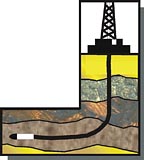
The introduction of a polyphosphate (see a drilling mud supplier for different brands available) will help breakdown the gel strength of the mud, but the bentonite and natural clays still need to be removed from the borehole annulus. Another method used to place the polyphosphates outside the screen is to pull a tremie pipe (3/4- or 1-inch) attached to the outside of the well casing. Small diameter holes drilled in the tremie pipe along the screened area allow for the polyphosphates to be injected where they are needed. Leaving the polyphosphates overnight helps break down the gel.
Jetting (high-pressure water) the inside of the casing is useful in blowing out the screen if the tool is properly designed; however, the mud still needs to be removed from the annulus or the plate-like clay particles will eventually reseal the screen.
Pumping clean water and polyphosphates into the well casing using a centrifugal pump under pressure (40 psi to 60 psi) to blow open the slots has been effective, especially if the casing can be pressurized and held for a few minutes. We also have found that using a submersible pump (and well seal to maintain pressure) to evacuate the casing quickly promotes a surging action that helps clear the openings from mud in the borehole annulus.
Fortunately, the screened surface area on horizontal wells is usually quite large, and the need for a horizontal well to be fully developed is not as critical as a vertical well to operate efficiently.

Report Abusive Comment